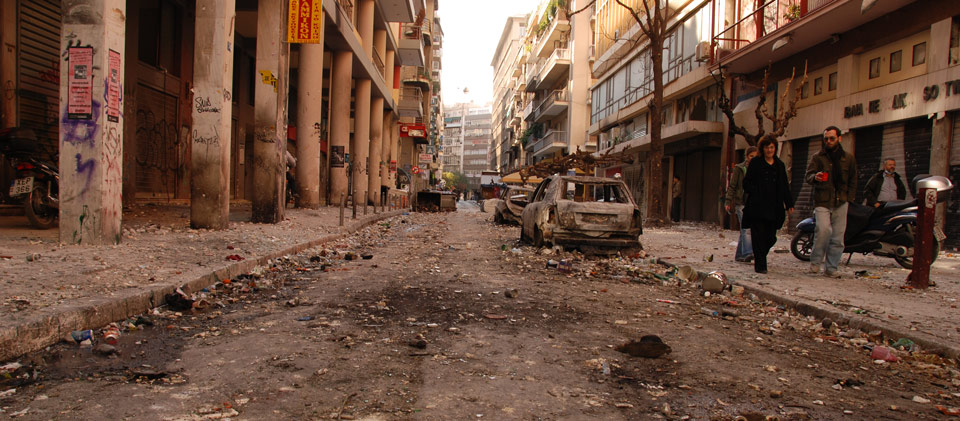
Over the past six years, cities around the world have seen peaks of anti-capitalist struggle: Athens, London, Barcelona, Cairo, Oakland, Montréal, Istanbul. A decade ago, anarchists would converge from around the world to participate in a single summit protest. Now many have participated in months-long upheavals in their own cities, and more surely loom ahead.
But what do we do after the crest? If a single upheaval won’t bring down capitalism, we have to ask what’s important about these high points: what we hope to get out of them, how they figure in our long-term vision, and how to make the most of the period that follows them. This is especially pressing today, when we can be sure that there are more upheavals on the way.
To this end, we’ve organized a dialogue with anarchists in some of the cities that have seen climaxes of conflict, including Oakland, Barcelona, and Montréal. Over the next several days, we will present the results of some of those discussions here, as a series of reflections on the opportunities and risks that arise during the declining phase of a movement.
After the Crest, part I: What to Do while the Dust Is Settling
We encourage our comrades around the country to discuss your own experiences in the waning phases of movements. Below, you can find the interview questions we sent out to initiate this dialogue. If you want to share your conclusions, please contact us: rollingthunder@crimethinc.com.
Between peaks of activity, what can anarchists do to prepare for the opportunities and challenges that will arise when momentum picks up?
What projects, practices, and connections that developed in the lull before the upswing proved useful? Which did not? Is there anything you wish you’d known or done in advance?
During a crescendo of social struggle, it can be difficult to maintain perspective; some things seem central yet prove transitory, while other things that fall by the wayside turn out afterwards to have been pivotal. What has the passing of time revealed about what really mattered?
It is rarely easy to tell where you are in the trajectory of a period of activity. Often at the high point, it seems that you are at the threshold of tremendous new potential, when in fact the window of possibility is already closing. Did you have a realistic sense of where you were in the course of events? What strategies did people employ to keep the window of possibility open? Were any of them successful?
In the waning phase of a period of momentum, what are the greatest risks and dangers? What can be done to retain ground that has been gained?
What errors proved most costly as momentum was dying down? What succeeded in preserving relationships and possibilities after the crest?


